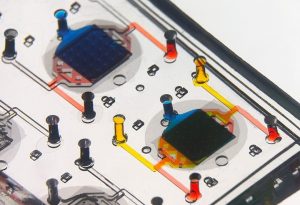
Chlorine gas is a commonly used industrial chemical. It is also highly toxic and potentially deadly; it was used as a chemical weapon in both World War I and the Syrian Civil War and has led to multiple deaths from industrial accidents. Mixing certain household cleaners can also produce the toxic gas, leading to lasting lung injuries for which there are currently no effective treatments.
Now, researchers at Penn Engineering and Penn’s Perelman School of Medicine are collaborating with BARDA, the U.S. Office of Health and Human Services’ Biomedical Advanced Research and Development Authority, to address this need using their lung-on-a-chip technology.
The laboratory of Dan Huh, associate professor in the Department of Bioengineering, has developed a series of organ-on-a-chip platforms. These devices incorporate human cells into precisely engineered microfluidic channels that mimic an organ’s natural environment, providing a way to conduct experiments that would not otherwise be feasible.

Huh’s previous research has involved using a placenta-on-a-chip to study which drugs are able to reach a developing fetus; investigating microgravity’s effect on the immune system by sending one of his chips to the International Space Station; and testing treatments for dry eye disease using an eye-on-a-chip, complete with a mechanical blinking eyelid.
Read the full story on Penn Engineering Today. Media contact Evan Lerner.
